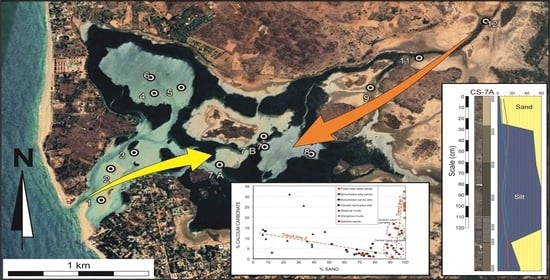Journal Description
Coasts
Coasts
is an international, peer-reviewed, open access journal on coastal engineering, management, conservation, biology and ecology, published quarterly online by MDPI.
- Open Access— free for readers, with article processing charges (APC) paid by authors or their institutions.
- High Visibility: indexed within GeoRef, and other databases.
- Rapid Publication: manuscripts are peer-reviewed and a first decision is provided to authors approximately 33.8 days after submission; acceptance to publication is undertaken in 5.1 days (median values for papers published in this journal in the second half of 2023).
- Recognition of Reviewers: APC discount vouchers, optional signed peer review, and reviewer names published annually in the journal.
Latest Articles
Lithofacies and Sediment Sequences of a Microtidal, Wave-Dominated Tropical Estuary in Somone Lagoon (Senegal, West Africa)
Coasts 2024, 4(2), 306-322; https://doi.org/10.3390/coasts4020016 - 05 Apr 2024
Abstract
►
Show Figures
Estuary sedimentary sequences have been the focus of several papers in the last decades; however, the majority these papers were centered in mesotidal and macrotidal estuaries of the middle latitudes. This present paper studies, from a sedimentological point of view, the infilling of
[...] Read more.
Estuary sedimentary sequences have been the focus of several papers in the last decades; however, the majority these papers were centered in mesotidal and macrotidal estuaries of the middle latitudes. This present paper studies, from a sedimentological point of view, the infilling of a microtidal, wave-dominated tropical estuary, where wide tidal flats, mangroves and sabkhas are developed. Somone Lagoon is a Senegalese protected environment, very rich from an ecological point of view and with a definitive touristic vocation. For this work, 14 piston cores were studied. Additionally, the grain size, calcium carbonate and organic matter contents of 61 sediment samples vertically distributed in these cores were analyzed. The distribution of facies and the vertical sequences of sediments show the influence of the tropical seasonal fluctuations of fluvial sediment supply and evaporation processes. A high degree of bioturbation and an elevated organic content can be interpreted as the result of a high capacity of retention of the organic material into the estuary influenced by the weak tidal currents typical of a microtidal regime. These processes, acting since the last Holocene invasion of sea level, caused an advanced state of infilling of this estuarine system where both flood tidal deltas and bay head deltas prograde above the fine facies of the central domain of the estuary.
Full article
Open AccessArticle
Microbial Eukaryotes in Natural and Artificial Salt Marsh Pools
by
Marina Potapova, Daiana Markarian, Abigail King and Laura Aycock
Coasts 2024, 4(2), 287-305; https://doi.org/10.3390/coasts4020015 - 02 Apr 2024
Abstract
►▼
Show Figures
Microscopic eukaryotes are important components of coastal wetland ecosystems. The goal of this study was to investigate the diversity of microeukaryotes in the tidal pools of a New Jersey salt marsh and to compare the assemblages of natural and artificial pools excavated for
[...] Read more.
Microscopic eukaryotes are important components of coastal wetland ecosystems. The goal of this study was to investigate the diversity of microeukaryotes in the tidal pools of a New Jersey salt marsh and to compare the assemblages of natural and artificial pools excavated for controlling mosquito populations. We evaluated microeukaryotic assemblages using the amplicon sequencing of 18S and rbcL DNA markers and the microscopic identification of diatoms in water and sediment samples. 18S unique amplicon sequence variants (ASV) representing ciliates, dinoflagellates, diatoms, and cercozoans were the most diverse, while the reads of dinoflagellates, diatoms, ciliates, and nematodes were the most abundant. The dominant ASVs were attributed to organisms that are characteristic of coastal plankton and sediments or those known for their resistance to salinity, desiccation, hypoxia, and UV stress. The sediment assemblages were more diverse compared to those from the water column and contained a larger portion of ASVs that were not assigned to any low-rank taxa, reflecting the current gaps in understanding the diversity of microeukaryotes. Most taxonomic groups were significantly different in their abundance and composition between natural and artificial pools. Dinoflagellates, haptophytes, chrysophytes, pelagophytes, and raphidophytes—the groups that include a large proportion of mixotrophic taxa and species known for forming harmful algal blooms—were more abundant in the artificial than in the natural pools. Fungi, labyrinthulomycetes, and peronosporomycetes were also more abundant in artificial pools, which may be related to organic matter enrichment. Diatoms and foraminifera showed an opposite trend of higher abundance in natural pools.
Full article

Figure 1
Open AccessReview
Coastal Restoration Challenges and Strategies for Small Island Developing States in the Face of Sea Level Rise and Climate Change
by
Edwin A. Hernández-Delgado
Coasts 2024, 4(2), 235-286; https://doi.org/10.3390/coasts4020014 - 01 Apr 2024
Abstract
►▼
Show Figures
The climate crisis poses a grave threat to numerous small island developing states (SIDS), intensifying risks from extreme weather events and sea level rise (SLR). This vulnerability heightens the dangers of coastal erosion, chronic water quality degradation, and dwindling coastal resources, demanding global
[...] Read more.
The climate crisis poses a grave threat to numerous small island developing states (SIDS), intensifying risks from extreme weather events and sea level rise (SLR). This vulnerability heightens the dangers of coastal erosion, chronic water quality degradation, and dwindling coastal resources, demanding global attention. The resultant loss of ecological persistence, functional services, and ecosystem resilience jeopardizes protection against wave action and SLR, endangering coastal habitats’ economic value, food security, infrastructure, and livelihoods. Implementing integrated strategies is imperative. A thorough discussion of available strategies and best management practices for coastal ecosystem restoration is presented in the context of SIDS needs, threats, and major constraints. Solutions must encompass enhanced green infrastructure restoration (coral reefs, seagrass meadows, mangroves/wetlands, urban shorelines), sustainable development practices, circular economy principles, and the adoption of ecological restoration policies. This requires securing creative and sustainable funding, promoting green job creation, and fostering local stakeholder engagement. Tailored to each island’s reality, solutions must overcome numerous socio-economic, logistical, and political obstacles. Despite challenges, timely opportunities exist for coastal habitat restoration and climate change adaptation policies. Integrated strategies spanning disciplines and stakeholders necessitate significant political will.
Full article
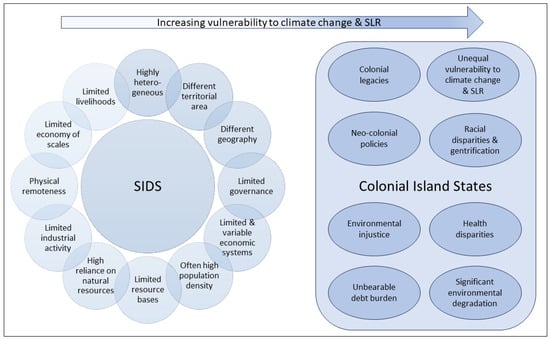
Figure 1
Open AccessCommunication
Further Evidence for Breeding White-Beaked Dolphin (Lagenorhynchus albirostris) in Inner Danish Waters
by
Aage Kristian Olsen Alstrup, Carl Chr. Kinze, Natacha Mia Kristensen, Trine Hammer Jensen, Charlotte Bie Thøstesen, Hanne Lyngholm Larsen, Karen Ankersen Sønnichsen, Line A. Kyhn, Thomas Eske Holm, Jens Jørgen Sigsgaard and Sussie Pagh
Coasts 2024, 4(2), 226-234; https://doi.org/10.3390/coasts4020013 - 01 Apr 2024
Abstract
►▼
Show Figures
The white-beaked dolphin (Lagenorhynchus albirostris) is the second most frequently stranded cetacean species along the Danish coastline. The northern North Sea, the Skagerrak, the Kattegat and the Danish straits are part of the species distributional range. Here, we present eight incidents
[...] Read more.
The white-beaked dolphin (Lagenorhynchus albirostris) is the second most frequently stranded cetacean species along the Danish coastline. The northern North Sea, the Skagerrak, the Kattegat and the Danish straits are part of the species distributional range. Here, we present eight incidents of breeding activity for the white-beaked dolphin in the inner Danish waters, reviewed from yearly reports made by the National Contingency Plan concerning strandings of marine mammals in Denmark from 2009 to 2023, Danish Wildlife Diseases Surveillance reports from 2014 to 2023 and the citizen science database Naturbasen in the period 2002 to 2023. Three pregnant females, three lactating females and one calf were found stranded in the inner Danish waters. Besides this, there have been live sightings of a female with a newborn calf. We conclude that the white-beaked dolphin is breeding in the inner Danish waters.
Full article
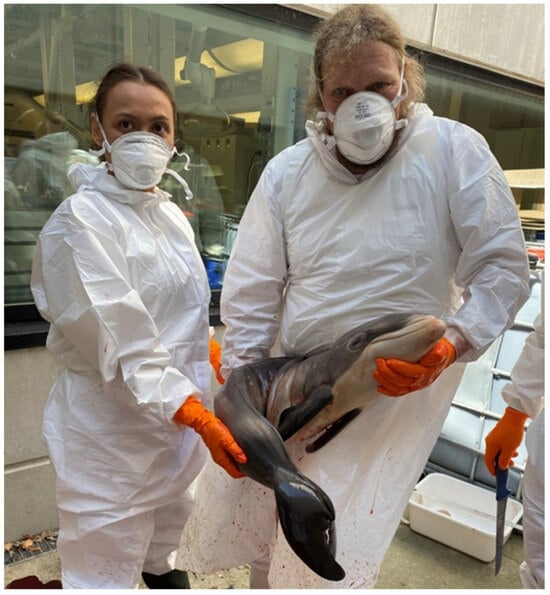
Figure 1
Open AccessArticle
Horizontal Rates of Wetland Migration Appear Unlikely to Keep Pace with Shoreline Transgression under Conditions of 21st Century Accelerating Sea Level Rise along the Mid-Atlantic and Southeastern USA
by
Randall W. Parkinson
Coasts 2024, 4(1), 213-225; https://doi.org/10.3390/coasts4010012 - 14 Mar 2024
Abstract
This investigation evaluated two fundamental assumptions of wetland inundation models designed to emulate landscape evolution and resiliency under conditions of sea level rise: that they can (1) migrate landward at the same rate as the transgressing shoreline and (2) immediately replace the plant
[...] Read more.
This investigation evaluated two fundamental assumptions of wetland inundation models designed to emulate landscape evolution and resiliency under conditions of sea level rise: that they can (1) migrate landward at the same rate as the transgressing shoreline and (2) immediately replace the plant community into which they are onlapping. Rates of wetland (e.g., marsh, mangrove) migration were culled from 11 study areas located in five regions of focus: Delaware Bay, Chesapeake Bay, Pamlico Sound, South Florida, and Northwest Florida. The average rate of marsh migration (n = 14) was 3.7 m yr−1. The average rate of South Florida mangrove migration (n = 4) was 38.0 m yr−1. The average rate of upland forest retreat (n = 4) was 3.4 m yr−1. Theoretical rates of shoreline transgression were calculated using site-specific landscape slope and scenario-based NOAA sea level rise elevations in 2050. Rates of shoreline transgression over the marsh landscape averaged 94 m yr−1. The average rate of shoreline transgression in the mangrove-dominated areas of South Florida was 153.2 m yr−1. The calculated rates of shoreline transgression were much faster than the observed horizontal marsh migration, and by 2050, the offset or gap between them averaged 2700 m and ranged between 292 and 5531 m. In South Florida, the gap average was 3516 m and ranged between 2766 m and 4563 m. At sites where both horizontal marsh migration and forest retreat rates were available, the distance or gap between them in 2050 averaged 47 m. Therefore, the results of this study are inconsistent with the two fundamental assumptions of many wetland inundation models and suggest that they may overestimate their resilience under conditions of 21st century accelerating sea level rise.
Full article
(This article belongs to the Topic Anthropic Impacts in Marine Coastal Waters: Assessment, Case Studies and Solutions)
►▼
Show Figures
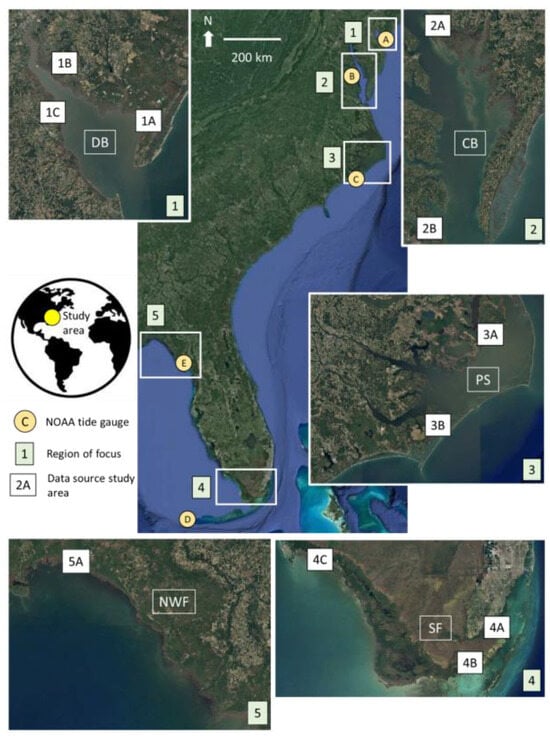
Figure 1
Open AccessArticle
Use of eDNA to Determine Source Locations of Deadly Jellyfish (Cubozoa) in an Open Coastal System
by
Scott J. Morrissey, Dean R. Jerry and Michael J. Kingsford
Coasts 2024, 4(1), 198-212; https://doi.org/10.3390/coasts4010011 - 05 Mar 2024
Abstract
►▼
Show Figures
Challenges associated with cubozoan jellyfish detection and the limitations of current detection techniques limit the ability of scientists to fill critical knowledge gaps surrounding their ecology. Environmental DNA (eDNA), however, has proven useful as an ecological survey tool to detect and study these
[...] Read more.
Challenges associated with cubozoan jellyfish detection and the limitations of current detection techniques limit the ability of scientists to fill critical knowledge gaps surrounding their ecology. Environmental DNA (eDNA), however, has proven useful as an ecological survey tool to detect and study these deadly jellyfish. This study aimed to leverage the power of eDNA to detect and explore the distribution of the Australian box jellyfish (Chironex fleckeri), encompassing both its medusae and polyp life history stages, within an open coastal bay (Horseshoe Bay) of Magnetic Island, Queensland, Australia. Our investigation focused on a hypothesis concerning the source locations of the jellyfish within Horseshoe Bay and, through a comparison of both life history stage distributions, aimed to determine potential population stock boundaries. eDNA results aligned with the predicted nearshore distribution of medusae. Further, the elusive benthic polyp stage was also detected. These findings confirmed Horseshoe Bay as a source location of the jellyfish. Moreover, our evidence supported a model that the area likely represents a population stock of the species. This adds to growing evidence suggesting some cubozoan jellyfish have population stocks of small spatial scales in both open and relatively closed ecosystems such as estuaries. In conclusion, this study serves as a notable example of eDNA’s ability to resolve critical knowledge gaps surrounding cubozoan ecology and to enhance the management ability of these deadly jellyfish to reduce envenomations.
Full article
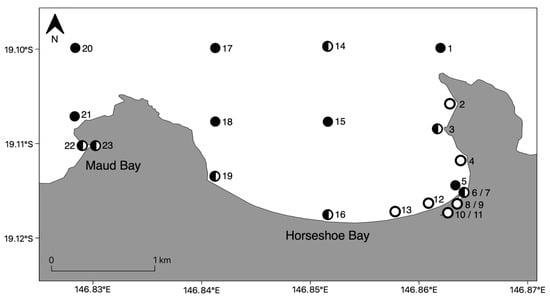
Figure 1
Open AccessArticle
Exploring the Intricate Connections between the Influence of Fishing on Marine Biodiversity and Their Delivery of Ecological Services Driven by Different Management Frameworks
by
Paloma Alcorlo, Susana García-Tiscar, María Rosario Vidal-Abarca, María Luisa Suárez-Alonso, Lucía Checa and Iratxe Díaz
Coasts 2024, 4(1), 168-197; https://doi.org/10.3390/coasts4010010 - 01 Mar 2024
Abstract
►▼
Show Figures
The goal of this project is to assess the state of marine biodiversity in the Natura 2000 marine network in Spain and analyze the impact of fishing policies on it. The study focuses on three marine demarcations in Spain: North Atlantic, South Atlantic,
[...] Read more.
The goal of this project is to assess the state of marine biodiversity in the Natura 2000 marine network in Spain and analyze the impact of fishing policies on it. The study focuses on three marine demarcations in Spain: North Atlantic, South Atlantic, and the Strait of Gibraltar and Alborán Sea. The research uses the DPSIR (Drivers of Change-Pressure-State-Impact-Response) framework, a multi-criteria analysis approach to understand the relationships between biodiversity loss, fishing, marine ecosystem integrity, and the provision of ecosystem services. Our results revealed a significant decline in biodiversity since 1985 in the four marine areas studied; this loss was more pronounced in the Gulf of Cadiz (in Andalusia) and less intense in the northern regions of Spain (Galicia and Asturias). This trend aligns with the global degradation of marine ecosystems and loss of biodiversity caused by human activities. The main drivers behind this decline are economic factors promoting industrial fishing and overexploitation. However, there has been a reduction in the industrial fishing fleet since the 2000s, supported by the European Maritime and Fisheries Fund for transitioning toward sustainable fishing methods. Despite the increase in regulations and the establishment of marine protected areas, these measures have not been effective enough to stop the loss of marine biodiversity. The results highlight the importance of combining administrative measures such as creating marine protected areas and implementing fisheries management regulations with the preservation of cultural services provided by these ecosystems. Successful governance models that involve collaboration between fishermen and decision-makers have been observed in northern Galicia and the Gulf of Cádiz.
Full article
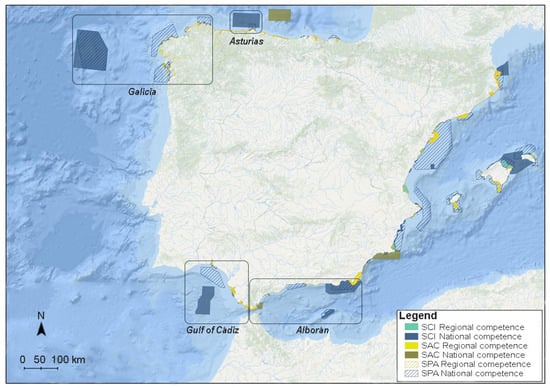
Figure 1
Open AccessArticle
Catalyzing Conservation: An Analysis of Fish Stock Dynamics in a Marine Protected Area before and after Artificial Reef Deployment
by
Athanasios A. Kallianiotis, Chryssa Anastasiadou and Ioannis E. Batjakas
Coasts 2024, 4(1), 150-167; https://doi.org/10.3390/coasts4010009 - 01 Mar 2024
Abstract
►▼
Show Figures
The marine ecosystem’s balance is crucial for sustaining biodiversity and supporting fisheries. Marine protected areas have been increasingly used to enhance marine habitats, yet their impact on fish populations remains a topic of debate. This study focuses on a marine protected area in
[...] Read more.
The marine ecosystem’s balance is crucial for sustaining biodiversity and supporting fisheries. Marine protected areas have been increasingly used to enhance marine habitats, yet their impact on fish populations remains a topic of debate. This study focuses on a marine protected area in Kitros, Pieria, in Greece, where an artificial reef was constructed, to understand its influence on coastal fish populations. The objectives were to investigate the changes in fish biomass and abundance, comparing the data from periods before and after the construction of an artificial reef. This research compares the data between 2007 and 2008 with the data between 2016 and 2017, collected with bottom trawl surveys strategically executed prior to and after the artificial reef’s installation. Fish species captured were identified, with their lengths and masses measured. The findings indicate an increase in the biomass and abundance of certain fish species after artificial reef deployment, notably the commercially significant Mullus barbatus and Pagellus erythrinus. The artificial reef in Kitros, Pieria, with its surrounding marine protected area appears to have had a positive impact on the local fish populations over the years, suggesting that it can contribute to marine conservation and fishery enhancement. These results underscore the potential of artificial reefs as tools for marine ecosystem management, offering insights for policymakers and environmentalists into coastal resource management.
Full article
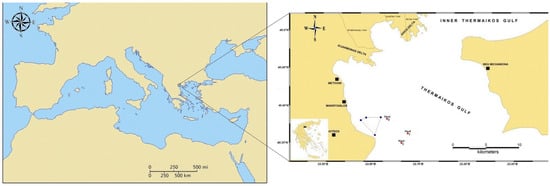
Figure 1
Open AccessArticle
Random Forest Classifier Algorithm of Geographic Resources Analysis Support System Geographic Information System for Satellite Image Processing: Case Study of Bight of Sofala, Mozambique
by
Polina Lemenkova
Coasts 2024, 4(1), 127-149; https://doi.org/10.3390/coasts4010008 - 26 Feb 2024
Abstract
Mapping coastal regions is important for environmental assessment and for monitoring spatio-temporal changes. Although traditional cartographic methods using a geographic information system (GIS) are applicable in image classification, machine learning (ML) methods present more advantageous solutions for pattern-finding tasks such as the automated
[...] Read more.
Mapping coastal regions is important for environmental assessment and for monitoring spatio-temporal changes. Although traditional cartographic methods using a geographic information system (GIS) are applicable in image classification, machine learning (ML) methods present more advantageous solutions for pattern-finding tasks such as the automated detection of landscape patches in heterogeneous landscapes. This study aimed to discriminate landscape patterns along the eastern coasts of Mozambique using the ML modules of a Geographic Resources Analysis Support System (GRASS) GIS. The random forest (RF) algorithm of the module ‘r.learn.train’ was used to map the coastal landscapes of the eastern shoreline of the Bight of Sofala, using remote sensing (RS) data at multiple temporal scales. The dataset included Landsat 8-9 OLI/TIRS imagery collected in the dry period during 2015, 2018, and 2023, which enabled the evaluation of temporal dynamics. The supervised classification of RS rasters was supported by the Scikit-Learn ML package of Python embedded in the GRASS GIS. The Bight of Sofala is characterized by diverse marine ecosystems dominated by swamp wetlands and mangrove forests located in the mixed saline–fresh waters along the eastern coast of Mozambique. This paper demonstrates the advantages of using ML for RS data classification in the environmental monitoring of coastal areas. The integration of Earth Observation data, processed using a decision tree classifier by ML methods and land cover characteristics enabled the detection of recent changes in the coastal ecosystem of Mozambique, East Africa.
Full article
(This article belongs to the Special Issue Measuring Shoreline Variability and Understanding It's Local Impacts)
►▼
Show Figures

Figure 1
Open AccessFeature PaperArticle
Characterizing Seiches Oscillations in a Macro-Tidal Estuary
by
Nicolas Guillou and Georges Chapalain
Coasts 2024, 4(1), 108-126; https://doi.org/10.3390/coasts4010007 - 07 Feb 2024
Abstract
►▼
Show Figures
Seiches oscillations may account for an important proportion of sea level variations in nearshore environments, inducing overflow and surges while impacting the safety of marine areas. However, complementary investigations are still required to characterize seiches in coastal basins, including especially estuaries. The present
[...] Read more.
Seiches oscillations may account for an important proportion of sea level variations in nearshore environments, inducing overflow and surges while impacting the safety of marine areas. However, complementary investigations are still required to characterize seiches in coastal basins, including especially estuaries. The present study exhibited seiches characteristics in the intertidal zone of the upper Elorn estuary (western Brittany, France), within the city of Landerneau, which is regularly subjected to river overflow and inundation. This investigation relied on five-year measurements of the free-surface elevation. As recorded time series were highly discontinuous around low tide, an original data analysis technique was implemented to exhibit seiches characteristics during the different tidal cycles. Measurements revealed important seiches oscillations with heights liable to exceed 0.6 m and periods of around 45–70 min. Seiches showed furthermore a fortnightly variability with pronounced heights and an increased number of oscillations during neap tides. These variations appeared, however, to be disturbed by the additional effects of meteorological conditions, including especially the influence of wind. The number of oscillations around high tide was thus found to increase in strong wind conditions. These effects were particularly noticeable at low atmospheric pressure, suggesting a sensitivity of seiches to wind meteorological patterns during cyclonic events.
Full article
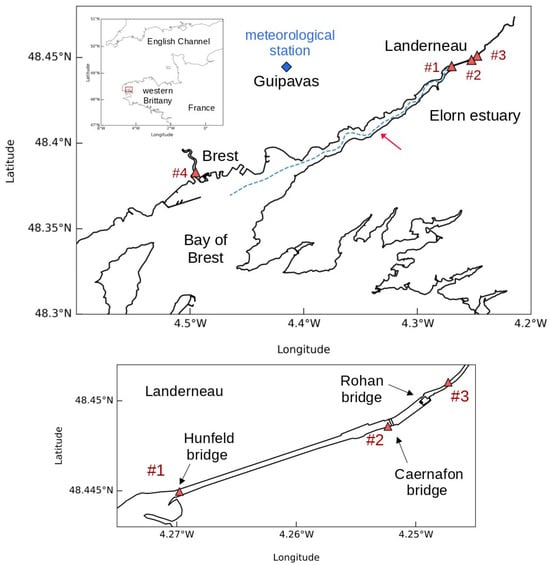
Figure 1
Open AccessFeature PaperReview
Mercury Biogeochemistry and Biomagnification in the Mediterranean Sea: Current Knowledge and Future Prospects in the Context of Climate Change
by
Roberto Bargagli and Emilia Rota
Coasts 2024, 4(1), 89-107; https://doi.org/10.3390/coasts4010006 - 04 Feb 2024
Abstract
►▼
Show Figures
In the 1970s, the discovery of much higher mercury (Hg) concentrations in Mediterranean fish than in related species of the same size from the Atlantic Ocean raised serious concerns about the possible health effects of neurotoxic monomethylmercury (MMHg) on end consumers. After 50
[...] Read more.
In the 1970s, the discovery of much higher mercury (Hg) concentrations in Mediterranean fish than in related species of the same size from the Atlantic Ocean raised serious concerns about the possible health effects of neurotoxic monomethylmercury (MMHg) on end consumers. After 50 years, the cycling and fluxes of the different chemical forms of the metal between air, land, and marine environments are still not well defined. However, current knowledge indicates that the anomalous Hg accumulation in Mediterranean organisms is mainly due to the re-mineralization of organic material, which favors the activity of methylating microorganisms and increases MMHg concentrations in low-oxygen waters. The compound is efficiently bio-concentrated by very small phytoplankton cells, which develop in Mediterranean oligotrophic and phosphorous-limited waters and are then transferred to grazing zooplankton. The enhanced bioavailability of MMHg together with the slow growth of organisms and more complex and longer Mediterranean food webs could be responsible for its anomalous accumulation in tuna and other long-lived predatory species. The Mediterranean Sea is a “hotspot” of climate change and has a rich biodiversity, and the increasing temperature, salinity, acidification, and stratification of seawater will likely reduce primary production and change the composition of plankton communities. These changes will likely affect the accumulation of MMHg at lower trophic levels and the biomagnification of its concentrations along the food web; however, changes are difficult to predict. The increased evasion of gaseous elemental mercury (Hg°) from warming surface waters and lower primary productivity could decrease the Hg availability for biotic (and possibly abiotic) methylation processes, but lower oxygen concentrations in deep waters, more complex food webs, and the reduced growth of top predators could increase their MMHg content. Despite uncertainties, in Mediterranean regions historically affected by Hg inputs from anthropogenic and geogenic sources, such as those in the northwestern Mediterranean and the northern Adriatic Sea, rising seawater levels, river flooding, and storms will likely favor the mobilization of Hg and organic matter and will likely maintain high Hg bioaccumulation rates for a long time. Long-term studies will, therefore, be necessary to evaluate the impact of climate change on continental Hg inputs in the Mediterranean basin, on air–sea exchanges, on possible changes in the composition of biotic communities, and on MMHg formation and its biomagnification along food webs. In this context, to safeguard the health of heavy consumers of local seafood, it appears necessary to develop information campaigns, promote initiatives for the consumption of marine organisms at lower trophic levels, and organize large-scale surveys of Hg accumulation in the hair or urine of the most exposed population groups.
Full article
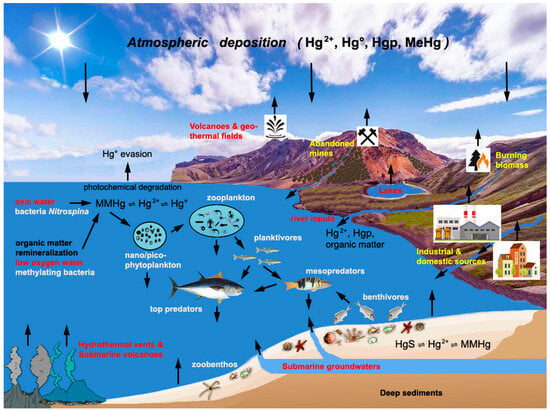
Figure 1
Open AccessArticle
Coastal Retreat on the Spanish Mediterranean Coast in a Climate Change Context: Effects of the Regulation of the Segura River at Its Mouth and the Coastal Sand Dune in Guardamar del Segura (Alicante, Spain)
by
Antonio Oliva, Jorge Olcina and Alfredo Ollero
Coasts 2024, 4(1), 63-88; https://doi.org/10.3390/coasts4010005 - 02 Feb 2024
Abstract
►▼
Show Figures
Coastal retreat processes are usually associated with many anthropogenic actions, such as the regulation of river basins, the construction of hydraulic storm defence works in coastal areas and the building of housing on the beach. To all of this, we should also add
[...] Read more.
Coastal retreat processes are usually associated with many anthropogenic actions, such as the regulation of river basins, the construction of hydraulic storm defence works in coastal areas and the building of housing on the beach. To all of this, we should also add the increase in sea levels due to the effect of climate change. The chosen area of study corresponds to the coastal area of the municipality of Guardamar del Segura, belonging to the Segura River Basin. The methodology applied in this study comprised the gathering of historical information, the extraction of data using GIS, the compiling of data using official organisations and the analysis of all these data from a geographical perspective. The obtained results show the chronology of the regulation works in the Segura Basin and their relationship with the reduction and negative trend in average ordinary flows (1940–2023) and the extraordinary, swelled flows recorded in the period 1994–2023. Furthermore, the coastlines from 1923 to 2023 were mapped, enabling us to determine the evolution of the coastline retreat processes experienced in the dune ridge of Guardamar del Segura and the increase in the frequency of impacts due to storms on Babilonia Beach. Finally, data on wind, waves and marine currents recorded at a gauging station were incorporated, enabling us to understand their impact on this coastal sector. The results obtained are discussed, and they indicate the need to incorporate data on sediment into the study in order to complete it. The conclusions reveal the existence of a relationship between all these anthropogenic elements in the beach erosion processes experienced in the village of Guardamar del Segura.
Full article
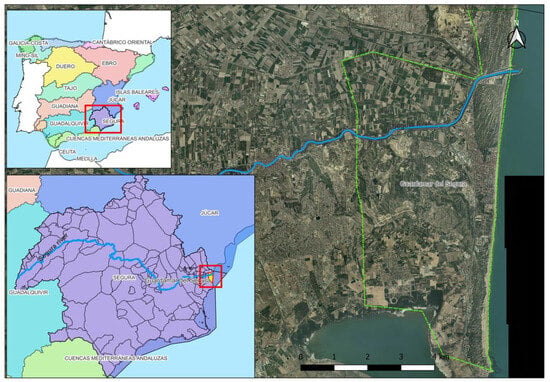
Figure 1
Open AccessArticle
Regional Controls on Climate and Weather Variability on the Southwest Coast of Peru
by
Mark R. Jury
Coasts 2024, 4(1), 49-62; https://doi.org/10.3390/coasts4010004 - 25 Jan 2024
Abstract
►▼
Show Figures
Southwestern Peru has an arid climate typical of subtropical west coasts bordering cold ocean currents. Mountain runoff is barely able to sustain urban needs and motivates this research. Using high-resolution satellite reanalysis products, the meso-scale climate and weather variability are explored via point-to-field
[...] Read more.
Southwestern Peru has an arid climate typical of subtropical west coasts bordering cold ocean currents. Mountain runoff is barely able to sustain urban needs and motivates this research. Using high-resolution satellite reanalysis products, the meso-scale climate and weather variability are explored via point-to-field regression. A time series spanning 1970–2022 of Tacna area (18 S, 70.2 W, 570 m) rainfall, potential evaporation, wind, and weather parameters were evaluated for thermodynamic and kinematic features. Although sea breezes draw marine air inland, they simultaneously generate low-level divergence and subsidence aloft. Potential evaporation in early summer causes water deficits that are rarely offset by late summer runoff from the Andes Mountains. Winter (May–September) showers from passing cold fronts are more frequent during El Niño. Warming of the tropical east Pacific accelerates subtropical westerly winds that lift over the coastal plains. Quasi-stationary Rossby wave patterns amplify transient troughs at 70 W, but the winter showers rarely exceed 4 mm/day due to low-level stability from negative heat fluxes over cool seawater offshore. Two winter wet spells were studied using satellite and surface data (July 2002, July 2009). Light showers were prominent in elevations from 400 to 900 m. An early summer dry spell was considered (November 2020), wherein southeast winds, coastal upwelling, and low dewpoint temperatures coincided with La Niña conditions. A rain-gauge transect showed that summer convection stays east of the Andes escarpment and seldom benefits the coastal plains. Thus, water resources in Tacna are strained beyond the carrying capacity.
Full article
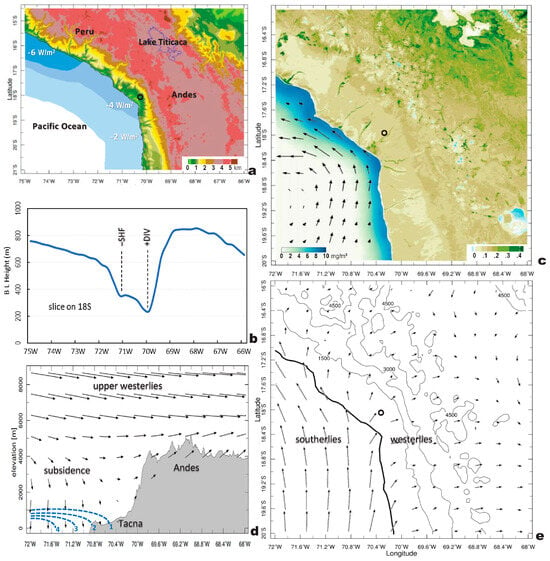
Figure 1
Open AccessFeature PaperArticle
The Invasion of Caulerpa cylindracea Sonder 1845 in the Calabria Coastal Seas
by
Nicola Cantasano, Vincenzo Di Martino and Gaetano Pellicone
Coasts 2024, 4(1), 34-48; https://doi.org/10.3390/coasts4010003 - 18 Jan 2024
Abstract
►▼
Show Figures
Caulerpa cylindracea, Indo-Pacific and thermophilic macroalgal species, have spread in Italian coastal waters, especially in the western Mediterranean Sea. Also, along the Calabria coastline, this Invasive Alien Species (IAS) was able to colonize most of the western and eastern seasides of the
[...] Read more.
Caulerpa cylindracea, Indo-Pacific and thermophilic macroalgal species, have spread in Italian coastal waters, especially in the western Mediterranean Sea. Also, along the Calabria coastline, this Invasive Alien Species (IAS) was able to colonize most of the western and eastern seasides of the region. This research was conducted between 1999 and 2021 through a detailed cost-effective citizen science program. The novelty of this research was to determine the overall distribution of Caulerpa cylindracea along Calabria seawaters from the Tyrrhenian to the Ionian coasts. The results of the monitoring survey highlighted the presence of Caulerpa cylindracea in 45 collecting stations throughout the Calabrian coastline. This regional assessment showed the extensive adaptability of the species to different environmental conditions: from exposed to sheltered sites, in shaded and sunny coastal areas and also throughout pristine and polluted waters. The rapid and increasing spread of the species could affect the structure of Mediterranean biota or, otherwise, could lead in time to new ecological niches. As highlighted in the most recent literature, it is necessary to update monitoring and mapping plans for the protection of marine biodiversity through close coordination between scientists, citizens and policy makers, all engaged to ensure effective management of invasive processes.
Full article
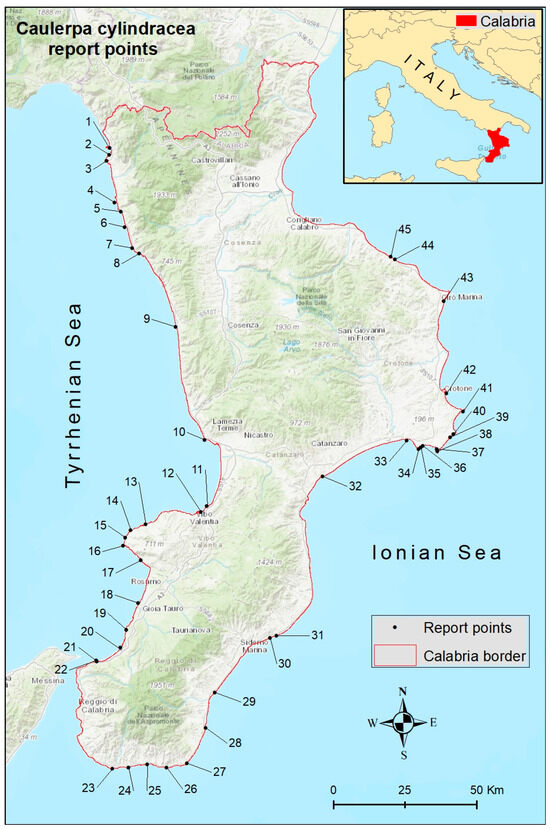
Figure 1
Open AccessArticle
Red Tide Outreach in Florida: Message Framing, Environmental Emotions, and Support for Mitigation
by
Brooke Harowitz, Catherine C. Macdonald and Julia Wester
Coasts 2024, 4(1), 21-33; https://doi.org/10.3390/coasts4010002 - 04 Jan 2024
Abstract
►▼
Show Figures
“Red tide” is the popular name for a harmful algal bloom that occurs frequently in Florida waters and has significant impacts on the environment, the economy, and human and animal health. This paper addresses the limited understanding of public attitudes surrounding red tide
[...] Read more.
“Red tide” is the popular name for a harmful algal bloom that occurs frequently in Florida waters and has significant impacts on the environment, the economy, and human and animal health. This paper addresses the limited understanding of public attitudes surrounding red tide and the potential for message framing to increase support for mitigation action. A sample of Florida residents (n = 498) was randomly shown a digital article framed around different red tide impacts (economic loss, human health risks, ecosystem damage, or harm to charismatic species) or a control article not framed around a specific red tide impact. Participants were then queried about their emotional responses, support for red tide mitigation policies, and intentions to change their behavior to mitigate impacts. Participants reported higher levels of negative emotions after viewing the harm to charismatic megafauna framing, indicating that messaging may play a significant role in eliciting environmental emotions. Message frames did not significantly impact other policy attitudes. Results demonstrate barriers to shifting support for mitigation where public support for action is already high.
Full article
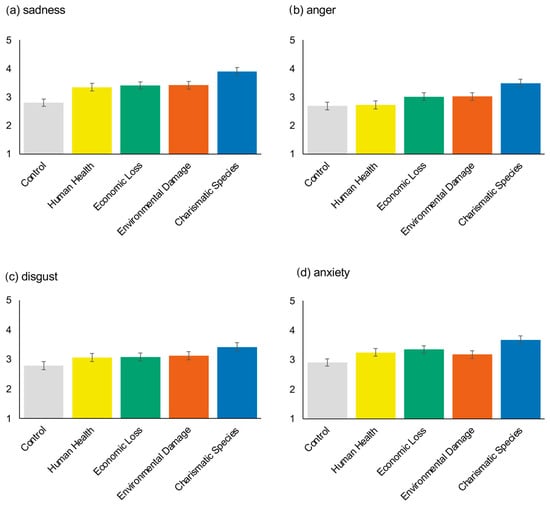
Figure 1
Open AccessArticle
Geomorphic Response of the Georgia Bight Coastal Zone to Accelerating Sea Level Rise, Southeastern USA
by
Randall W. Parkinson and Shimon Wdowinski
Coasts 2024, 4(1), 1-20; https://doi.org/10.3390/coasts4010001 - 22 Dec 2023
Cited by 1
Abstract
►▼
Show Figures
Synthesis of geologic and chronologic data generated from Holocene sedimentary sequences recovered along the inner continental shelf, shoreface, and modern coastal zone of the Georgia Bight reveal a synchronous sequence of paleoenvironmental events that occurred in response to rate of sea level rise
[...] Read more.
Synthesis of geologic and chronologic data generated from Holocene sedimentary sequences recovered along the inner continental shelf, shoreface, and modern coastal zone of the Georgia Bight reveal a synchronous sequence of paleoenvironmental events that occurred in response to rate of sea level rise tipping points. During the early Holocene (11.7–8.2 cal kyr BP), the paleoshoreline was overstepped and submerged by rapidly rising seas that averaged ~5 mm yr−1. Rates of rise during the middle Holocene (8.2–4.2 cal kyr BP) averaged ~2 mm yr−1 and this deceleration resulted in the formation of coastal environments and sedimentary sequences that were subsequently reworked as the shoreface continued its landward and upward migration. The modern coastal zone emerged commensurate with the late Holocene (4.2–0 cal kyr BP), when the rate of sea level rise averaged <1 mm yr−1. Analysis of water level data collected at six NOAA tide gauge stations located along the Georgia Bight coast indicates the rate of relative sea level rise has increased from a historical average of 3.6 ± 0.2 mm yr−1 (<1972 to 2022) to 6.6 ± 0.8 (1993 to 2022) and during the 21st century it has averaged 9.8 ± 0.3 mm yr−1 (2003 to 2022). The current rate of sea level rise is nearly double the early Holocene rate of rise. Based upon a novel application of the principle of uniformitarianism (i.e., the past is the key to the future), the likely geomorphic trajectory of the Georgia Bight coastal zone under conditions of 21st century accelerating sea level rise will be one of increasing instability (e.g., coastal erosion) and flooding (e.g., overwash, breaching). Evidence of an emerging instability within the coastal zone has been previously reported throughout the region and supports the trajectory of geomorphic change proposed herein. This will ultimately result in the submergence of existing landscapes and replacement by estuarine and marine environments, which may hasten in pace and scale given the current rate of sea level rise is expected to continue accelerating throughout this century. These findings have not been previously reported and should be considered by coastal practitioners responsible for conceptualizing risk, as well as the formulation and implementation of adaptation action plans designed to mitigate threats to the built and natural environment induced by climate change.
Full article
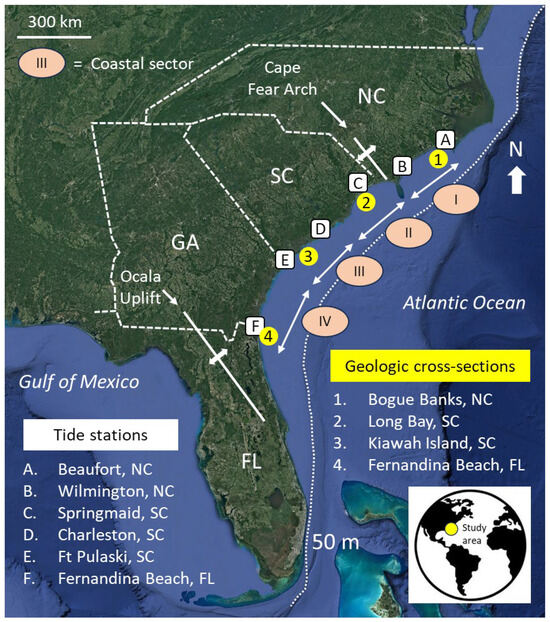
Figure 1
Open AccessCommunication
Impact of the Toxic Dinoflagellate Alexandrium catenella on the Valve Movement of Mytilus edulis: A Comparison between Two Populations with Contrasting Histories Exposure
by
Guillaume Durier, Luc A. Comeau, José M. F. Babarro, Michel Starr, Jeff C. Clements and Réjean Tremblay
Coasts 2023, 3(4), 426-433; https://doi.org/10.3390/coasts3040026 - 13 Dec 2023
Abstract
►▼
Show Figures
Shellfish aquaculture farms, due to their coastal position, face the threat of exposure to harmful algal blooms. Such blooms can release, among others, paralytic shellfish toxins (PST) produced by the dinoflagellate Alexandrium catenella and are known to cause the restriction of bivalve harvesting
[...] Read more.
Shellfish aquaculture farms, due to their coastal position, face the threat of exposure to harmful algal blooms. Such blooms can release, among others, paralytic shellfish toxins (PST) produced by the dinoflagellate Alexandrium catenella and are known to cause the restriction of bivalve harvesting sites. Shellfish can accumulate PSTs in levels that are poisonous for humans, therefore making them unfit for consumption. Thus, the ability to detect PSTs before they reach the critical threshold is crucial for minimizing losses in the industry. Previous studies have demonstrated that toxic algae detection is possible with the use of an early warning system based on the valve-gaping behaviour of blue mussel Mytilus edulis. However, some studies observed the presence of toxin resistance in other species of bivalves when they are regularly exposed to PSTs. If no resistance is observed whatever the past history of the populations would be with regard to PST exposure, this species could be appropriate as a sentinel candidate. In this study, we compare the valve-gaping behaviour of two blue mussel populations with contrasting long-term histories of PSTs events (i.e., regularly vs. not previously exposed to the PSTs producer) were compared using experimental exposure of A. catenella to M. edulis. It was found that mussels from both populations exhibited similar gaping behaviour patterns when exposed to A. catenella. For both populations, the number of valve closures and closure duration tended to increase in the presence of A. catenella, which suggested an avoidance response to the toxic dinoflagellate. In conclusion, our results support the use of M. edulis without origin discrimination
Full article
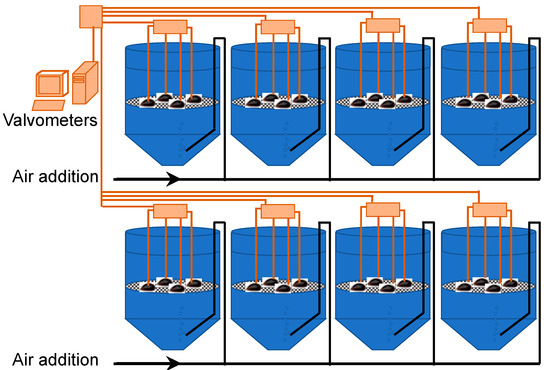
Figure 1
Open AccessCommunication
Indications from C:N:P Ratios in Surface Sediments along Land-to-Sea Gradients to Support Coastal Nutrient Management
by
Svenja Karstens, Jenny Friedrich, Jana K. Geuer, Katharina Grosser and Jens Schneider von Deimling
Coasts 2023, 3(4), 414-425; https://doi.org/10.3390/coasts3040025 - 12 Dec 2023
Abstract
►▼
Show Figures
Shallow, semi-enclosed coastal systems are particularly prone to eutrophication. Depending on local site conditions and historical nutrient legacies, sea-based measures might be necessary in addition to land-based nutrient removal. In this study, C:N:P ratios were combined with open-source bathymetric information and linked with
[...] Read more.
Shallow, semi-enclosed coastal systems are particularly prone to eutrophication. Depending on local site conditions and historical nutrient legacies, sea-based measures might be necessary in addition to land-based nutrient removal. In this study, C:N:P ratios were combined with open-source bathymetric information and linked with the prevailing geomorphological and sedimentological regimes to gain insights into nutrient hotspots and understand their sources and fate in coastal waters. Land-based sediment samples were taken behind outlets at three sites in Eckernförde Bay (Baltic Sea), and complemented with ship-based sampling at locations approximately 8 m and 12 m water depth. The total carbon, nitrogen and phosphorus concentrations in surface sediments increased at deeper sites. This suggests that an increased downslope particle transport and deposition regime, based on local geomorphology, might influence nutrient hotspots to a larger extent than proximity to sources (e.g., outlets). Overall, the recorded C:N ratios (mean = 28.12) were closer to the ratio of terrestrial plants than those of marine phytoplankton, indicating allochthonous sources of organic matter.
Full article
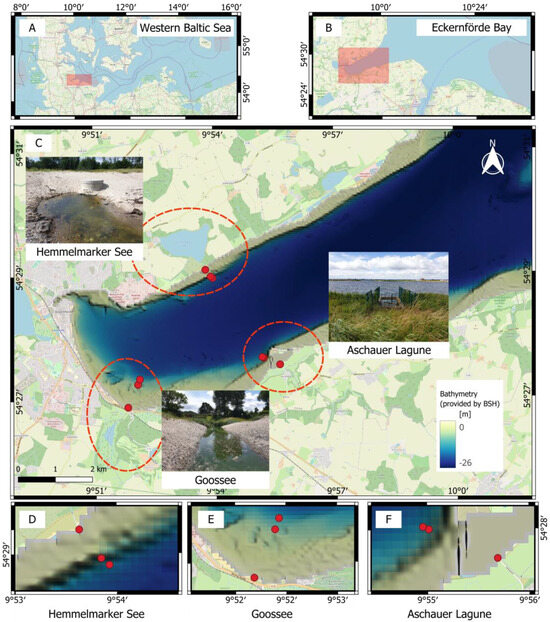
Figure 1
Open AccessArticle
Forty Years of No-Take Protection Preserves Local Fish Diversity in a Small Urban Marine Protected Area
by
Tom Robert Davis and David Harasti
Coasts 2023, 3(4), 401-413; https://doi.org/10.3390/coasts3040024 - 06 Nov 2023
Abstract
►▼
Show Figures
Small no-take marine protected areas (MPAs) in urban settings can fail to adequately protect biodiversity due to the combined effects of illegal fishing and species emigrating outside the protected area boundaries. Further assessment of the effectiveness of these areas is needed to provide
[...] Read more.
Small no-take marine protected areas (MPAs) in urban settings can fail to adequately protect biodiversity due to the combined effects of illegal fishing and species emigrating outside the protected area boundaries. Further assessment of the effectiveness of these areas is needed to provide insights into how they can best be managed to generate conservation benefits. The Fly Point no-take MPA in Port Stephens, New South Wales, Australia, was used as a case study, with the objective of examining whether a small urban no-take MPA can produce conservation benefits, despite the handicaps imposed by its size and location. Diver-based underwater visual census data, recording fish species and abundances, was obtained from 434 surveys conducted in Port Stephens (2009–2022) at three sites within the Fly Point no-take MPA and at three surrounding sites open to fishing. These data were analysed using permutational multivariate analysis of variance to determine whether no-take protection significantly benefited fish species richness and diversity. We found significantly higher species richness for sites in the no-take MPA than in surrounding areas and significant differences in assemblages between no-take and fished areas, driven in part by greater abundances of two fishery-targeted species in the no-take MPA (Acanthopagrus australis and Scorpis lineolata). Generally, fish diversity was also significantly higher for sites within the no-take MPA, although diversity was also high in fished sites adjacent to the no-take MPA. Study results demonstrate that small urban no-take MPAs can provide conservation benefits, especially when these areas have been protected for more than a decade and where high visibility and local stewardship enable adequate enforcement of no-take restrictions. Consequently, planning for MPAs in urban areas should endeavour to ensure high levels of public support and, ideally, should situate MPAs in highly visible locations, in order to maximise their conservation outcomes.
Full article
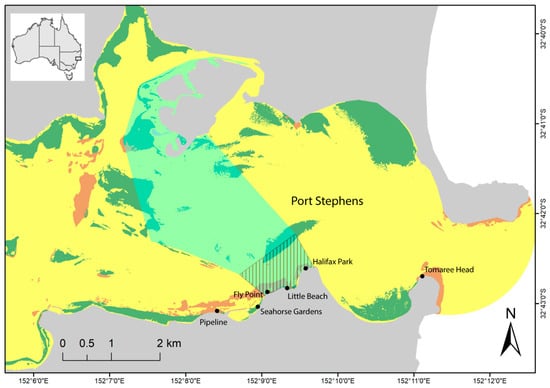
Figure 1
Open AccessArticle
Detection of Beach–Dune Geomorphic Changes by Means of Satellite and Unmanned Aerial Vehicle Data: The Case of Altamura Island in the Gulf of California
by
Francisco Flores-de-Santiago, Luis Valderrama-Landeros, Julen Villaseñor-Aguirre, León F. Álvarez-Sánchez, Ranulfo Rodríguez-Sobreyra and Francisco Flores-Verdugo
Coasts 2023, 3(4), 383-400; https://doi.org/10.3390/coasts3040023 - 06 Nov 2023
Abstract
►▼
Show Figures
Although sandy islands in arid environments are vital protection sites for endemic species, they face constant natural and anthropogenic hazards, such as storm surge impacts and the occasional presence of off-road vehicles. Monitoring the sedimentary dune-beach displacement and balance is essential because sediment
[...] Read more.
Although sandy islands in arid environments are vital protection sites for endemic species, they face constant natural and anthropogenic hazards, such as storm surge impacts and the occasional presence of off-road vehicles. Monitoring the sedimentary dune-beach displacement and balance is essential because sediment transportation usually does not depend on external sources, such as rivers. The latest generation of geomatic applications may be relevant to understanding coastal vulnerability due to their ability to acquire and process spatial data at unprecedented scales. The objective of this study was to analyze the sedimentary dynamics of a distinctive dune corridor on Altamura Island in the Gulf of California, Mexico. We compared three ultra-high spatial resolution digital surface models (DSMs) with geomorphic change detection (DoD), covering the 1150 m coastal stretch. We used light detection and ranging (LiDAR) data and analyzed changes in the coastline with the semi-automatic CoastSat tool. Although the orthomosaics and the DSM collected in April, June, and October 2021 show different conditions in sediment distribution along the beach-dune interface, depending on the direction and intensity of the wind, the two DoDs showed a constant sediment distribution balance of ~13 M m3 between April and June and June and October. LiDAR data along the 40-km length of the sandy island indicate that the entire island could present a similar sedimentation pattern between the dune and beach interface. The CoastSat data indicate a constant accretion of 125 m in the beach-ocean interface between 2015 and 2022. This study demonstrates that the sediment balance between the dune and the beach on arid sandy islands is vital for conserving their shoreline and all associated coastal ecosystems.
Full article
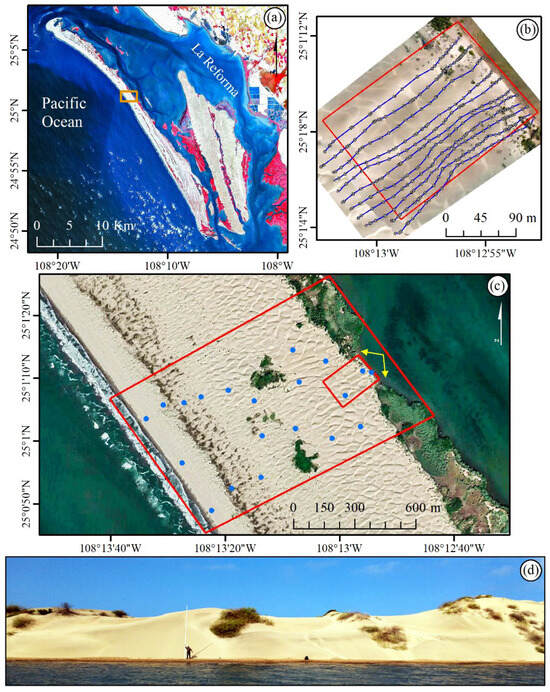
Figure 1
Highly Accessed Articles
Latest Books
E-Mail Alert
News
Topics
Topic in
Animals, Coasts, Diversity, JMSE, Sustainability
Anthropic Impacts in Marine Coastal Waters: Assessment, Case Studies and Solutions
Topic Editors: Alberta Mandich, Jessica AlessiDeadline: 30 December 2024
Topic in
Atmosphere, Coasts, Land, Sustainability, Water
Contemporary Waterfronts, What, Why and How?
Topic Editors: Maria José Andrade Marques, Francesca Dal Cin, João Pedro CostaDeadline: 28 February 2026

Conferences
Special Issues
Special Issue in
Coasts
Response of Coastal Communities to the Impacts of Marine Heatwaves
Guest Editor: Robert SchlegelDeadline: 30 June 2024

